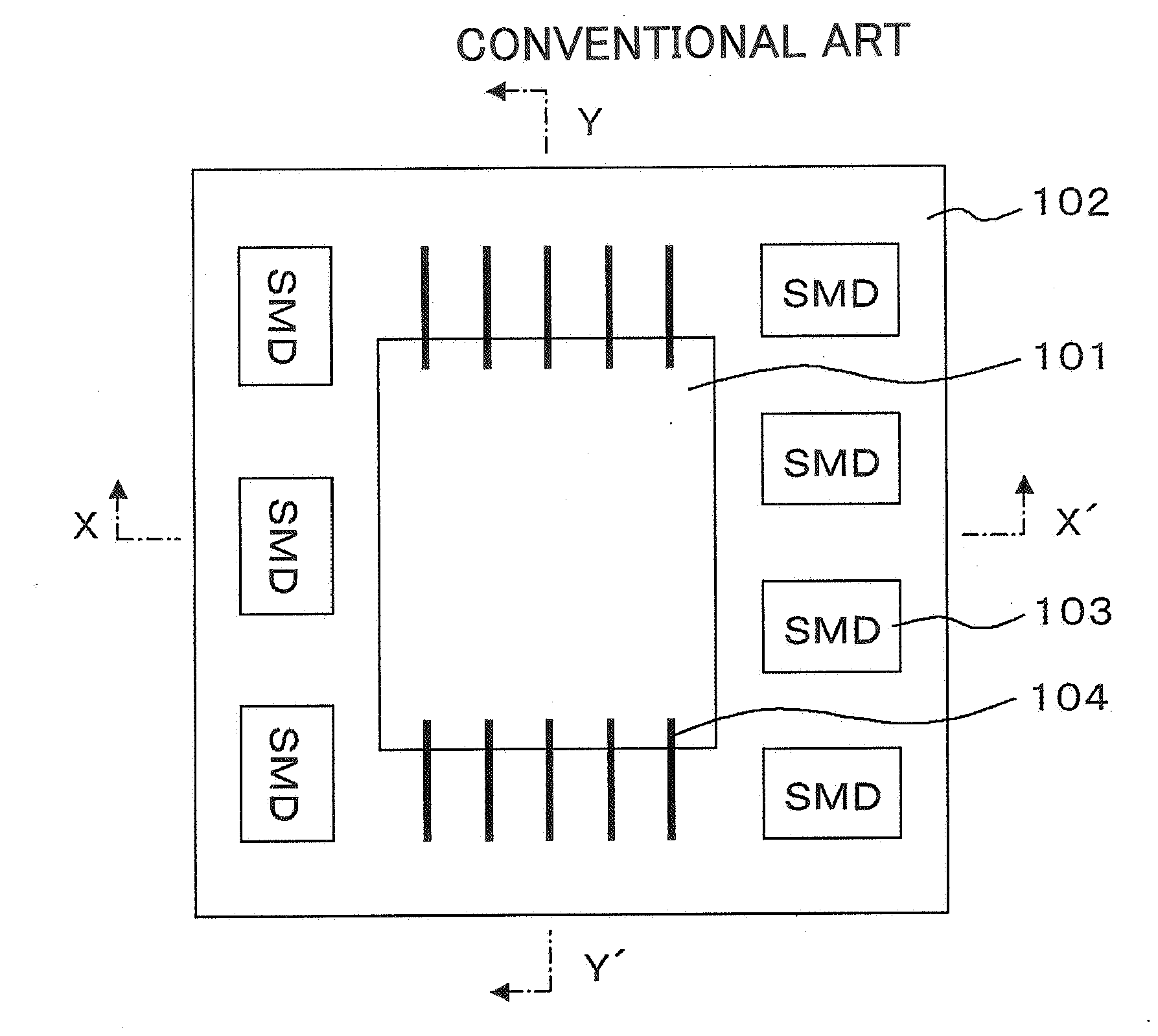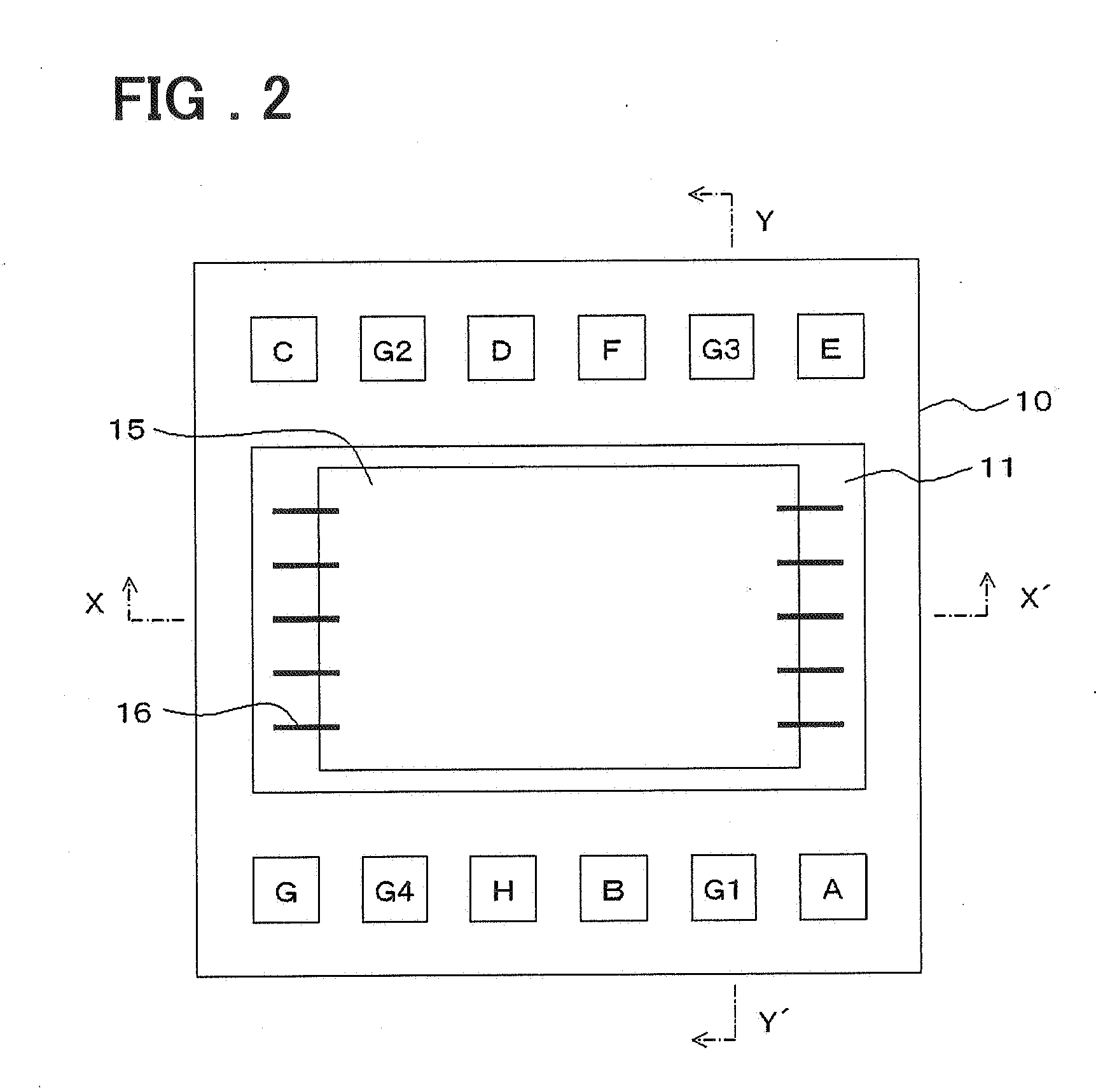Power amplifier module
a technology of power amplifier and module, which is applied in the field of power amplifier modules, can solve the problems of difficult insertion of power amplifier chips, difficult to meet this demand, and the size of power amplifier modules of 3 mm3 mm is barely capable of being achieved with the conventional implementation, so as to achieve the effect of reducing the volum
- Summary
- Abstract
- Description
- Claims
- Application Information
AI Technical Summary
Benefits of technology
Problems solved by technology
Method used
Image
Examples
first example
[0032]A power amplifier module according to a first example of the present invention will be described with reference to the drawings, in which FIG. 1 is a block diagram schematically illustrating a power amplifier module 1 according to the first example, exemplified as an IC module of a stacked structure.
[0033]The power amplifier module 1 depicted in FIG. 1 is indicative of a two-stage amplifier. The power amplifier module 1 has a power amplifier chip 15, an input matching circuit M2, an output matching circuit M3, a bias circuit B1 and a bias circuit B2.
[0034]The power amplifier chip 15 includes an interstage matching circuit M1 connected between an initial-stage transistor T1 and a final-stage transistor T2. The transistor T1 is constituted by a GaAsHBT or the like, e.g., and has a collector electrically connected to the interstage matching circuit M1 and to bias circuit B1, a base electrically connected to the input matching circuit M2 and electrically connected to a control pad...
second example
[0049]A power amplifier module according to a second example of the present invention will now be described. In the power amplifier module according to the second example, the connection between the first LTCC wiring board and the power amplifier chip uses bump-joining instead of bonding wire. As a result, the volume of the cavity can be reduced, a bonding area is no longer necessary and further miniaturization can be achieved.
third example
[0050]A power amplifier module according to a third example of the present invention will now be described. In the power amplifier module according to the third example, the power amplifier chip is made one in which a via is provided below the bonding pad and a pad corresponding to this via is provided on the reverse side (underside) of the chip. The power amplifier chip is bump-joined to the first LTCC wiring board. As a result, the volume of the cavity can be reduced, a bonding area is no longer necessary and further miniaturization can be achieved.
[0051]As many apparently widely different modes or examples of the present invention can be made without departing from the spirit and scope thereof, it is to be understood that the invention is not limited to the specific examples thereof except as defined in the appended claims.
[0052]In a further aspect, the IC module of a stacked layer structure comprises a first wiring board and a second wiring board wiring board, each of which may ...
PUM
 Login to View More
Login to View More Abstract
Description
Claims
Application Information
 Login to View More
Login to View More - R&D
- Intellectual Property
- Life Sciences
- Materials
- Tech Scout
- Unparalleled Data Quality
- Higher Quality Content
- 60% Fewer Hallucinations
Browse by: Latest US Patents, China's latest patents, Technical Efficacy Thesaurus, Application Domain, Technology Topic, Popular Technical Reports.
© 2025 PatSnap. All rights reserved.Legal|Privacy policy|Modern Slavery Act Transparency Statement|Sitemap|About US| Contact US: help@patsnap.com



